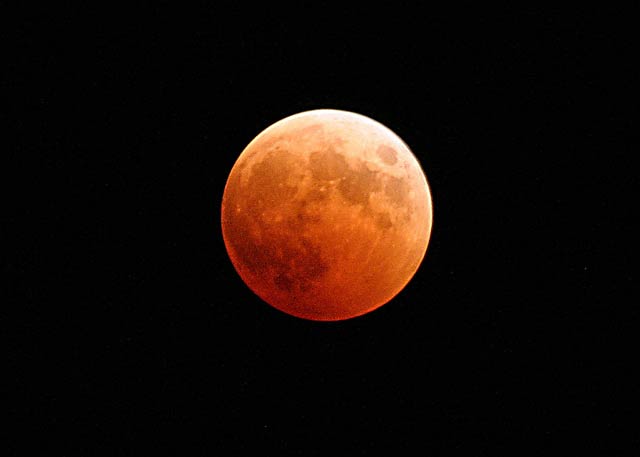
South Africa is to experience the rare double treat of a larger full moon, also known as a super moon, and lunar eclipse in the early hours of Monday, the Astronomical Society of Southern Africa said on Sunday.
“The actual eclipse is occurring at 3am on 28 September. The rarity of the super moon and the actual eclipse [occurring at the same time] is unusual,” said chair and viewing officer Jerome Jooste of the Astronomical Society in Johannesburg, which uses the Johannesburg Observatory.
The term “super moon” generally referred to a full moon which was at its nearest point to the earth.
Any other time the moon passed that nearest point and was not a full moon, the term “super moon” would not apply.
“That may or may not occur during a full moon phase,” Jooste said. “It’s purely coincidental, there is no physics that occurs, it’s just random.”
Regarding the lunar eclipse, Jooste said there were two types.
“There is what we call penumbral. That means the half shadow and sometimes the moon doesn’t go into totality or total eclipse. Sometimes it only shows that half shadow over it,” he said.
“Tomorrow morning [Monday] we are going to see the total eclipse, what we refer to as umbra, where it passes through the deep shadow of the earth. It’s during that period that we see the moon turn a dark brown or orange colour and this is what is often termed a blood moon.”
It was possible to have up to four lunar eclipses a year, as they usually occurred around two weeks after a solar eclipse, as the moon moved from a new moon to a full moon and it is possible to have up to four solar eclipses a year.
“The lunar eclipse can be seen across the whole of Africa,” Jooste said.
“After the total eclipse, the moon will be setting for us as the eclipse finishes, so for those people who are seeing it live at that stage, they will only be seeing a portion of it.”
A super moon did have the effect of a slightly more exaggerated spring tide.
Both events could be viewed wherever you could see the moon, with clear skies preferable to see it, Jooste said.
According to the South African Weather Service, the interior of the country should have mostly clear skies around 3am, while from Cape Town up to Durban cloudy skies might interfere in a clear viewing. — News24
- Subscribe to TechCentral’s free daily newsletter




